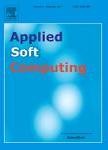版权所有:内蒙古大学图书馆 技术提供:维普资讯• 智图
内蒙古自治区呼和浩特市赛罕区大学西街235号 邮编: 010021

作者机构:Univ Shanghai Sci & Technol Sch Opt Elect & Comp Engn Shanghai Key Lab Modern Opt Syst Shanghai 20093 Peoples R China
出 版 物:《APPLIED SOFT COMPUTING》 (应用软计算)
年 卷 期:2020年第91卷
页 面:106186-106186页
核心收录:
学科分类:08[工学] 0812[工学-计算机科学与技术(可授工学、理学学位)]
基 金:National Natural Science Foundation of China [61772342 61703278]
主 题:Entity relationship classification Self-Attention mechanism Capsule Networks Dynamic routing algorithm
摘 要:To date, deep learning techniques, especially the combination of convolutional neural networks and recurrent neural networks with the attention mechanism, have been the state-of-the-art solutions for processing relation extraction and classification tasks. However, the neural network model constructed by this method cannot make full use of the labeled entities and their positional information in the relation classification, or even performs poorly on the small sample dataset. To address these issues, this paper proposes an entity relationship classification model BG-SAC, which combines BiGRU, Self-Attention mechanism and Capsule Networks. BG-SAC primarily uses BiGRU to obtain sentence sequential information and context-based semantic information, and then is coupled with the Self-Attention mechanism to get the correlation between words. Capsule Networks are used to acquire the positional information of entities. Eventually the probability that entities belong to a certain relationship category is calculated through the length of a capsule, so as to determine the relationship between entities and realize the classification of entity relationship. The experimental results show that the proposed model can effectively capture the word positional information and improve the classification effect with small sample datasets. (C) 2020 Elsevier B.V. All rights reserved.